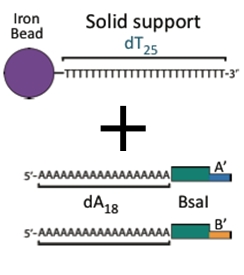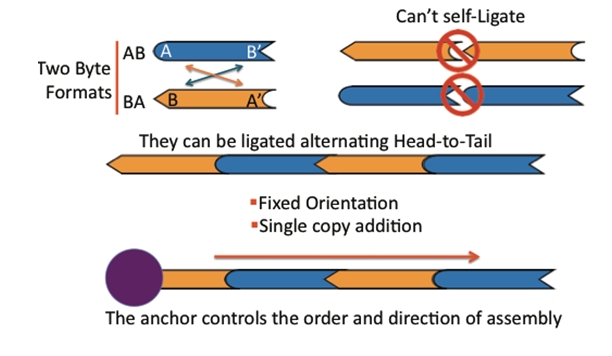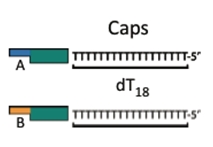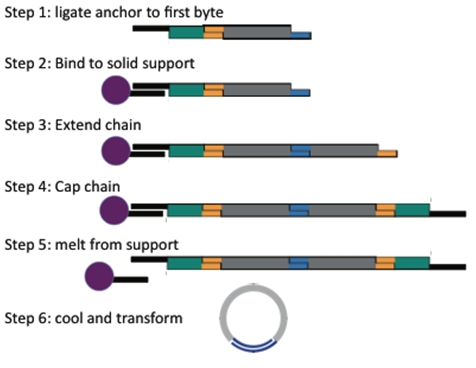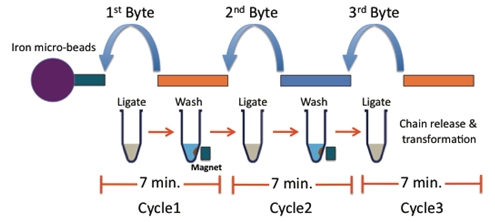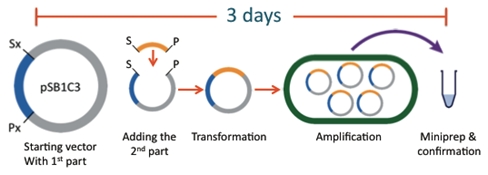Team:Alberta/Tour/biobytes
From 2010.igem.org
(→The Anchor) |
|||
| Line 14: | Line 14: | ||
==The Anchor== | ==The Anchor== | ||
| - | An iron micro bead attached to a piece of DNA. This piece serves as the initial piece from which we assemble a DNA construct. The bead allows us to manipulate the DNA with magnets making washing and subsequent attachments easier. | + | An iron micro bead attached to a piece of DNA. This piece serves as the initial piece from which we assemble a DNA construct. The bead allows us to manipulate the DNA with magnets, making washing and subsequent attachments easier. |
| - | [[Image:team-alberta-anchor-tour.jpg|center]] | + | [[Image:team-alberta-anchor-tour.jpg|center]] |
==The Bytes== | ==The Bytes== | ||
Revision as of 00:37, 27 October 2010
The Anchor
An iron micro bead attached to a piece of DNA. This piece serves as the initial piece from which we assemble a DNA construct. The bead allows us to manipulate the DNA with magnets, making washing and subsequent attachments easier.
The Bytes
DNA fragments that can be attached together to build up a larger construct. There are two types of pieces, AB and BA. The A end can join only with another A end and the B end can join only with another B end. As a result, pieces can only be joined in a single orientation.
The cap
A DNA fragment that finishes off a construct and allows for circularization of the construct into a plasmid.
Putting the pieces together
The process of building a plasmid is more elegant and more rapid than the current BioByte system!
Easy! And fast too, each step takes about 7 minutes.
Compare that to the standard BioBrick method:
Using this process we were able to assemble eight pieces in an afternoon!
 "
"

